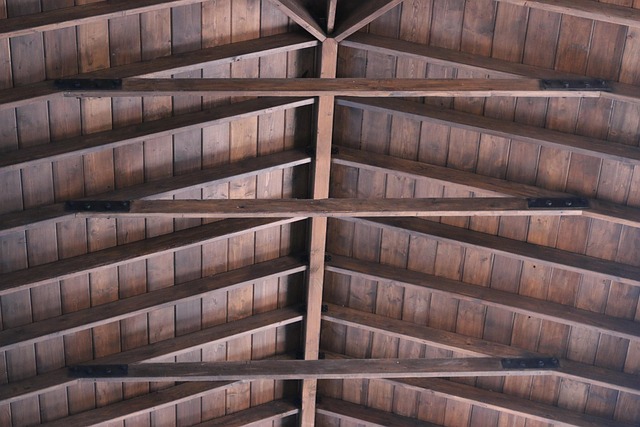Seamless single-ply membranes like TPO, PVC, and EPDM offer superior weather-resistant roofing, protecting structures from elements with their continuous barriers. Each material has unique benefits: TPO for strong seams, PVC for high tensile strength, and EPDM for flexibility. Investing in these roofs enhances commercial properties' value, reduces utility bills, and minimizes environmental impact. Proper installation and ongoing maintenance, including regular inspections and repairs, ensure their longevity and continued weather resistance.
“Discover the power of seamless single-ply membranes in revolutionizing commercial roofing. This comprehensive guide explores TPO, PVC, and EPDM—three game-changing materials known for their exceptional weather resistance. Learn how these membranes enhance structural integrity and curb appeal, offering a durable solution for any climate. From preparation to best practices and maintenance, we’ll navigate the process, ensuring your weather-resistant roof performs optimally for years to come.”
Understanding Seamless Single-Ply Membranes: TPO, PVC, and EPDM
Seamless single-ply membranes, including TPO (Thermoplastic Olefin), PVC (Polyvinyl Chloride), and EPDM (Ethylene Propylene Diene Monomer), are renowned for their superior weather-resistant roofing properties. These materials offer a seamless, continuous barrier that protects structures from the elements, ensuring long-lasting durability. Their light weight makes them easy to install, reducing labor costs and minimizing stress on building structures.
Each membrane type boasts unique characteristics: TPO provides excellent heat-weldability for strong, durable seams; PVC is known for its high tensile strength and low maintenance requirements; EPDM exhibits superior flexibility and resistance to UV rays and extreme temperatures. Choosing the right material depends on factors like climate, roof design, and budget. These seamless membranes are transforming the roofing industry by offering efficient, cost-effective solutions with enhanced performance and longevity.
Benefits of Weather-Resistant Roofing for Commercial Properties
Commercial properties benefit greatly from investing in weather-resistant roofing. These membranes, such as TPO, PVC, and EPDM, offer superior protection against harsh environmental conditions, including intense sunlight, heavy rain, snow, and extreme temperatures. Their durability ensures longer lifespan for roofs, reducing frequent repairs or replacements that can disrupt business operations.
Weather-resistant roofing also contributes to energy efficiency by providing insulation, helping to regulate interior temperatures and reducing the need for excessive heating or cooling. This not only saves on utility bills but also minimizes a building’s carbon footprint. Additionally, these membranes are designed for low maintenance, further streamlining property management tasks and contributing to cost savings over time.
Preparation and Installation Steps for Each Membrane Type
Best Practices for Ensuring Longevity and Performance
To ensure the longevity and optimal performance of seamless single-ply membranes like TPO, PVC, and EPDM, best practices should be followed throughout the installation process. First, it’s crucial to properly prepare the roof surface, ensuring it’s clean, dry, and free from contaminants. This includes repairing any existing damage and ensuring proper flashing around penetrations. Using high-quality materials and adhering to manufacturer guidelines is essential for weather-resistant roofing.
Regular maintenance, including inspecting for signs of wear or damage and promptly addressing any issues, plays a vital role in extending the membrane’s lifespan. Proper sealing at all joints and laps is also critical, as it prevents water penetration and ensures the structure remains intact under various weather conditions. Additionally, following recommended installation techniques, such as using appropriate tape and adhesives, enhances the overall durability of the roof system.
Maintenance and Repairs: Keeping Your Weather-Resistant Roof in Top Shape
Maintaining a seamless single-ply membrane roof, such as TPO, PVC, or EPDM, is essential to ensure its longevity and continued weather resistance. Regular inspections are key; look for any signs of damage, including tears, punctures, or loose seams. Addressing these issues promptly through repairs or replacements will prevent further complications.
Repairs can range from simple tasks like patching small tears using manufacturer-recommended materials to more complex procedures involving partial or complete membrane replacement. Keeping the roof surface clean and free from debris is also vital, as this prevents water accumulation and potential damage. Additionally, ensuring proper ventilation and drainage systems are in place helps maintain optimal membrane performance.
Seamless single-ply membranes, including TPO, PVC, and EPDM, offer an excellent solution for commercial roofing due to their superior weather resistance. By understanding the unique benefits and installation processes of each material, property owners can make informed decisions to ensure long-lasting protection. Following best practices during preparation and maintenance will further extend the lifespan of these durable roofs, making them a reliable and cost-effective choice for modern commercial properties. Invest in high-quality weather-resistant roofing, and your business can reap the rewards of a secure and efficient sanctuary above.
